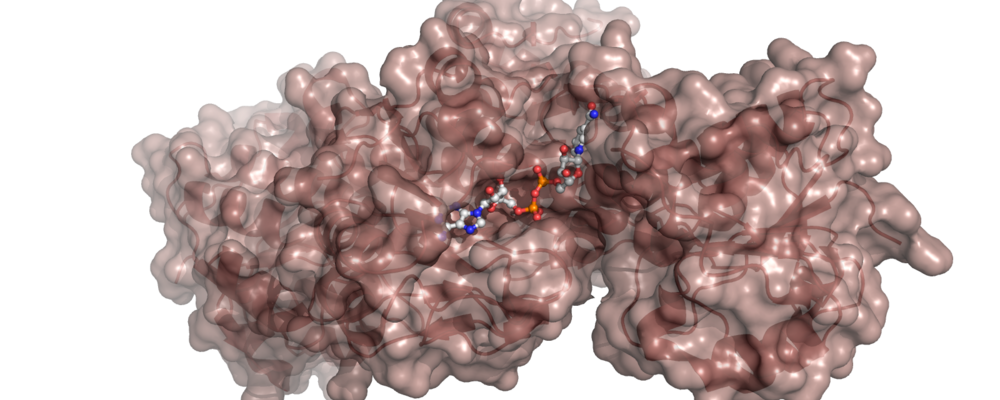
Chemical biology
Chemical biology comprises the interdisciplinary efforts to understand and characterize interactions between biological targets and natural or synthetically produced molecules and to develop these findings in a biological context. NMR spectroscopy is well suited to studies of transient or strong interactions between specific protein targets and low molecular weight molecules such as natural products or lipids, or synthetically produced fragments, drug candidates or approved drugs.
Fragment based drug discovery approaches are used for the design and development of novel lead compounds and NMR spectroscopy has emerged as a powerful method to study non-covalent protein-ligand complexes using ligand-observed techniques. Complementary, high resolution NMR spectroscopy studies of protein – ligand complexes can be made with protein target observed methodologies, for both low- and high-affinity complexes.
Fragment based screens (FBS) using NMR spectroscopy enables joint testing of a large number of fragments with low molecular weight (typically < 500 Da) against a target protein molecule or molecular complex. The Swedish NMR Centre is equipped with high field spectrometers (600-800 MHz) with cryogenically cooled probes optimized for either 1H or 19F-detection and SampleJet sample changers as well as liquid handling systems for sample preparations for FBS campaigns. With this setup, libraries of 1.000 fragments can be screened against a target protein molecule within days.
Ligand-observed FBS methods
Fragment or ligand-observed strategies are the first choice given a known protein target. These techniques rely on observation of changes to ligand spectra upon protein – ligand interactions. Any number of ligands can be screened, most commonly sets or libraries of 10-1000 compounds are used either in the form of a fragment based library or as separate samples of e.g. natural products, drug candidates or peptides. The Swedish NMR Centre offers access to two main fragment libraries; the Maybridge Ro3 diversity fragment library core set containing 800 fragments and the Bionet 19F fragment library obtained from Key Organics containing 428 fragments, with compounds in both of these libraries adhering to ‘rule of 3’ and without reactive groups or PAINS. There is also the possibility to conduct screens using any user supplied library or set of compounds.
An FBS screen starts with quality control of the fragments. Customarily, each substance is solubilized in DMSO-d6, diluted with buffer and a subsequent proton NMR spectrum is then sufficient to establish the integrity, solubility and purity of each substance. These spectra serve as reference spectra for each individual fragment. With the library data in hand, fragments are pooled together and added to the target protein in 10-fold or higher excess. Ten or more fragments may then be pooled in each sample. This allows for low amounts of protein to be consumed compared to the protein target observed approaches (see below), and spectra to be recorded without the need of protein isotope labeling. In addition, the signal line widths are not limited by the size of the protein target, and ligand-observed methods are thus applicable to large molecular weight systems. The protein – ligand mixes are analyzed by one or a combination of the following techniques: water-ligand observed via gradient spectroscopy (Water-LOGSY), saturation transfer difference (STD) or T2 or T1,rho relaxation experiments. Screening using 19F-detected experiments have emerged as an interesting complement to 1H screening because the simplicity of the spectra and wide 19F chemical shift range reduces the risk of overlap in fragment cocktails. The large difference in chemical shift between the free and bound states and large CSA of 19F also result in a larger binding response in T2-filtered experiments compared to 1H, hence lowering the required amount of protein needed even further.
Individual hit fragments should be validated either by use of a combination of the techniques above, with runs of individual fragments and, when applicable, in conjunction with a known inhibitor. The Swedish NMR Centre is currently using the 'Bruker FBS tool' to analyze these large-scale data sets in a systematic fashion. The FBS screen results may be used to extend, link or modify the fragments to obtain lead molecules with higher binding affinities, which in turn can be subjected to a range of protein target-observed methodologies.
Protein target-observed methods, starting point
The nature of the ligand – protein interaction of a successful hit obtained in a ligand-observed FBS screen can be further characterized with protein target-observed NMR experiments. These may provide detailed information about the location, binding kinetics, binding site properties and affinity of the interaction. The starting point is titration series using protein 15N/13C, 1H-HSQC, HMQC or TROSY-type experiments to observe chemical shift perturbations (CSP). This often requires full or selective isotope labeling of the target protein, and the outcome depends strongly on the nature of interaction such as affinity and kinetics, but also on the protein stability and molecular weight. Together with partial or full protein assignments, CSP’s can be used to pinpoint the characteristics of the ligand binding site. Additional information such as X-ray data or sets of known binders or inhibitors may be very valuable at this stage to aid in further ligand and protein characterization, as can the application of a multitude of other structural biology NMR experiments targeting proteins and protein – ligand interactions.
Further reading
- Alvar D. Gossert and Wolfgang Jahnke, ’NMR in drug discovery: A practical guide to identification and validation of ligands interacting with biological macromolecules’, Progress in Nuclear Magnetic Resonance Spectroscopy, 2016 (97), 82-125, doi.org/10.1016/j.pnmrs.2016.09.001